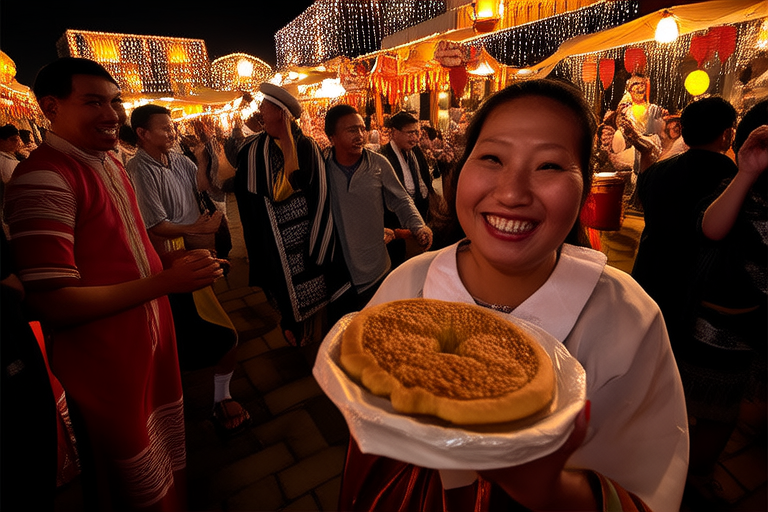From Festivals to Feasts: Unveiling Global Cultural Customs

From Festivals to Feasts: Unveiling Global Cultural Customs
In the vast tapestry of human civilization, festivals serve as vibrant threads that weave together the rich diversity of cultures across the globe. These celebrations not only mark significant dates in the calendar but also encapsulate the essence of societal values, historical narratives, and culinary traditions. This article embarks on a journey through some of the most fascinating festivals and customs from around the world, shedding light on their origins, significance, and the way they are observed today.
The Colors of Holi: A Festival of Love and Rebirth
One of the most iconic festivals in India is Holi, often referred to as the ‘Festival of Colors.’ Celebrated in the spring season, Holi signifies the triumph of good over evil and the arrival of spring. The legend of Hiranyakashipu, his son Prahlada, and the demoness Holika is central to the festival’s lore. According to this tale, Holika, immune to fire, was sent by her brother Hiranyakashipu to kill Prahlada, an ardent devotee of Lord Vishnu. However, due to divine intervention, Holika perished in the flames while Prahlada remained unharmed. The bonfire on the eve of Holi symbolizes the burning of Holika and the victory of virtue.
The day of Holi is marked by joyous revelry, where people smear each other with colored powders and water, dance, and sing. Traditional sweets like gujiyas (a sweet dumpling filled with khoya) and thandai (a milk-based drink spiced with almonds, fennel, and cardamom) are shared among friends and family. The festival brings communities together, transcending social barriers and fostering a spirit of unity and love.
Midsummer Night’s Dream: Celebrating the Summer Solstice
In many parts of Europe, the summer solstice, the longest day of the year, is celebrated with Midsummer festivities. Sweden’s celebration of Midsommar is particularly notable. Traditionally, Swedes gather in the countryside to dance around a maypole adorned with flowers and ribbons. The maypole serves as a focal point for communal singing and dancing. Participants wear traditional costumes, and children are often dressed in white with a garland of flowers around their necks.
The feast at Midsommar includes pickled herring, new potatoes, strawberries, and schnapps. A popular activity is the crowning of a midsummer king or queen, chosen for their wit and charm. The celebration is a reflection of the Swedish reverence for nature and the joy of communal gatherings, reinforcing the community’s connection to the land and its cycles.
Oktoberfest: A Toast to Bavarian Heritage
Originating in Munich, Germany, Oktoberfest is a grand celebration that draws millions of visitors annually. Initially held in 1810 to honor the marriage of Crown Prince Ludwig and Princess Therese of Saxe-Hildburghausen, the festival has evolved into a ten-day extravaganza of beer, music, and merriment. Today, Oktoberfest is synonymous with traditional Bavarian attire, hearty food, and copious amounts of beer.
Visitors can expect to sample a variety of dishes such as sausages (Würstle), pretzels, and potato pancakes (Kartoffelpuffer). The festival is punctuated by brass bands playing oompah music and parades featuring elaborately decorated floats. The emphasis on camaraderie and indulgence in local traditions makes Oktoberfest a quintessential expression of German culture and hospitality.
Diwali: The Festival of Lights
Diwali, the Festival of Lights, is one of the most important Hindu festivals celebrated throughout India and by Indian communities worldwide. It symbolizes the victory of light over darkness and good over evil. The festival commemorates the return of Lord Rama to Ayodhya after defeating the demon king Ravana, and his homecoming is marked by lighting lamps and setting off fireworks.
During Diwali, homes are cleaned and decorated with rangoli (colorful designs made on floors using rice flour or colored powder), and clay lamps are lit to welcome Lakshmi, the goddess of wealth and prosperity. Families gather to exchange gifts, wear new clothes, and share sweets like laddoos, barfis, and jalebis. Fireworks light up the night sky, creating a spectacle of color and sound that fills the air with excitement and joy.
Songkran: The Thai New Year Celebration
Songkran, the Thai New Year, falls on April 13th and marks the beginning of the traditional Thai lunar calendar. It is a time for cleansing and renewal, both physically and spiritually. Water plays a central role in Songkran celebrations, as people pour water over Buddha statues, elders, and even strangers to symbolize washing away sins and starting anew.
The streets come alive with water fights, where participants douse each other with water from buckets and hoses. Traditional foods include Khanom Buang (crispy pancakes filled with coconut cream and egg), Khao Tom Mud (sticky rice wrapped in banana leaves), and Yen Talay (deep-fried fish cakes). The festival is a reminder of the importance of respect for elders and the bond within families and communities.
Las Fallas: A Flamboyant Festival of Fire
Las Fallas is an annual festival held in Valencia, Spain, celebrating the coming of spring. The highlight of the festival is the construction and eventual burning of elaborate papier-mâché figures known as ninots. These sculptures are created months in advance and depict satirical scenes or caricatures of public figures. On the final night of the festival, the ninots are paraded through the streets before being set alight in a spectacular display of fire and color.
The festival begins with the planting of the椿指